
New Caledonia is a sui generis collectivity of overseas France in the southwest Pacific Ocean, south of Vanuatu, about 1,210 km (750 mi) east of Australia, and 17,000 km (11,000 mi) from Metropolitan France. The archipelago, part of the Melanesia subregion, includes the main island of Grande Terre, the Loyalty Islands, the Chesterfield Islands, the Belep archipelago, the Isle of Pines, and a few remote islets. The Chesterfield Islands are in the Coral Sea. French people, especially locals, call Grande Terre le Caillou, a nickname also used more generally for the entire New Caledonia. Pro-independence Kanak parties use the name (la) Kanaky to refer to New Caledonia, a term coined in the 1980s from the ethnic name of the indigenous Melanesian Kanak people who make up 41% of New Caledonia's population. New Caledonia is one of the European Union's Overseas Countries and Territories (OCTs), but it is not part of the European Union.

Nouméa is the capital and largest city of the French special collectivity of New Caledonia and is also the largest francophone city in Oceania. It is situated on a peninsula in the south of New Caledonia's main island, Grande Terre, and is home to the majority of the island's European, Polynesian, Indonesian, and Vietnamese populations, as well as many Melanesians, Ni-Vanuatu and Kanaks who work in one of the South Pacific's most industrialised cities. The city lies on a protected deepwater harbour that serves as the chief port for New Caledonia.
A territorial collectivity, or territorial authority, in many francophone countries, is a legal entity governed by public law that exercises within its territory certain powers devolved to it by the State as part of a decentralization process. In France, it also refers to a chartered administrative division of France with recognized governing authority. It is the generic name for any territory with an elective form of local government and local regulatory authority. The nature of a French territorial collectivity is set forth in Article 72 of the Constitution of France (1958), which provides for local autonomy within limits prescribed by law.
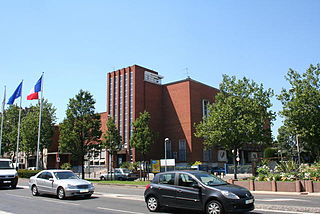
Le Bourget is a commune in the northeastern suburbs of Paris, France. It is located 10.6 km from the center of Paris.
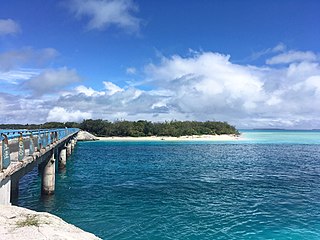
Ouvéa or Uvea is a commune in the Loyalty Islands Province of New Caledonia, an overseas territory of France in the Pacific Ocean. The settlement of Fayaoué, on Ouvéa Island, is the administrative centre of the commune.
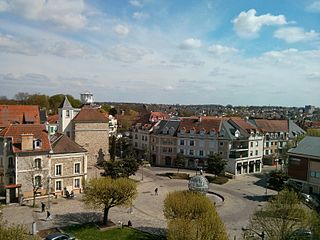
Villiers-sur-Marne is a commune in the eastern suburbs of Paris, France. It is located 14.8 km (9.2 mi) from the center of Paris.

Belep is a commune in the North Province of New Caledonia, an overseas territory of France in the Pacific Ocean. It has almost 900 people living on 70 km2.
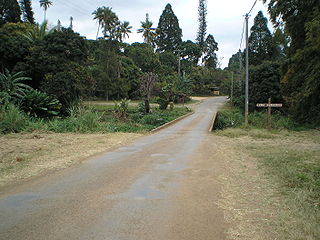
Canala is a commune in the North Province of New Caledonia, an overseas territory of France in the Pacific Ocean.

Dumbéa is a commune in the suburbs of Nouméa in the South Province of New Caledonia, an overseas territory of France in the Pacific Ocean. The population of the commune was 35,873 according to the 2019 census.

Farino is a landlocked commune in the South Province of New Caledonia, an overseas territory of France in the Pacific Ocean. It and neighbouring Sarraméa are the only two communes on the island that do not border the sea.

Kouaoua is a commune in the North Province of New Caledonia, an overseas territory of France in the Pacific Ocean. Nickel mining is operated in Kouaoua.
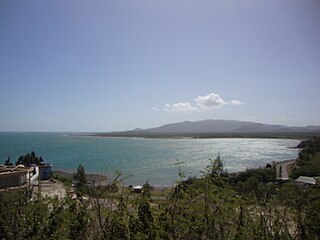
Koumac is a commune in the North Province of New Caledonia, an overseas territory of France in the Pacific Ocean.

Moindou is a commune in the South Province of New Caledonia, an overseas territory of France in the Pacific Ocean.

Ouégoa is a commune in the North Province of New Caledonia, an overseas territory of France in the Pacific Ocean.

Poum is a commune in the North Province of New Caledonia, an overseas territory of France in the Pacific Ocean. The small town of Poum is located in the far northwest, located on the southern part of Banare Bay, with Mouac Island just offshore. Aside from French, the native language of the Kanak inhabitants is nêlêmwa-nixumwak, an Austronesian language spoken by about 1,100 people. British fishermen came to the islands in 1855 seeking sea cucumbers, and settled and intermarried, and this is reflected in the last names of some clan members and on gravestones. In the 1850s, a hundred Europeans lived on Mouac Island and John Henry Williams established a presence on Néba island.
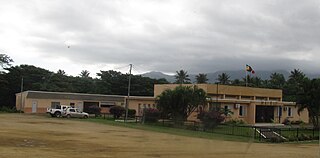
Poya is a commune in New Caledonia, an overseas territory of France in the Pacific Ocean. The largest part of the commune lies in the North Province of New Caledonia, and a smaller part of the commune lies in the South Province, an odd situation resulting from the creation of New Caledonia's provinces in 1989. At the 2019 census, 2,592 of the 2,802 inhabitants of Poya lived on the North Province's side of the commune, while only 210 inhabitants lived on the South Province's side.

Sarraméa is a landlocked commune in the South Province of New Caledonia, an overseas territory of France in the Pacific Ocean. It and neighbouring Farino are the only two communes on the island that do not border the sea. With a population of 500, Sarraméa is the least populous commune of not only South Province, but all of New Caledonia.
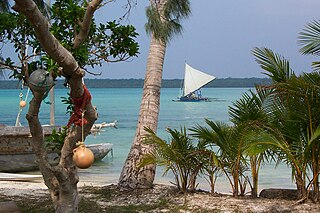
L'Île-des-Pins is a commune in the South Province of New Caledonia, an overseas territory of France in the Pacific Ocean. L'Île-des-Pins is made up of the Isle of Pines, the smaller Kôtomo Island, and several islets around these two, as well as the distant island of Walpole, which is located almost 150 kilometres to the east. The Isle of Pines and adjacent islands are located to the south of New Caledonia's mainland. At 16,830 km from Paris, L'Île-des-Pins is further from the French capital than any other commune of France. The settlement of Vao, on the Isle of Pines, is the administrative centre of the commune of L'Île-des-Pins.

Overseas France consists of 13 French territories outside Europe, mostly the remnants of the French colonial empire that remained a part of the French state under various statuses after decolonisation. Most, but not all, are part of the European Union.
In May 2024, protests and riots broke out in New Caledonia, a sui generis collectivity of overseas France in the Pacific Ocean. The violent protests have led to ten deaths, the declaration of a state of emergency on 16 May, deployment of the French army, and the block of the social network TikTok.




















